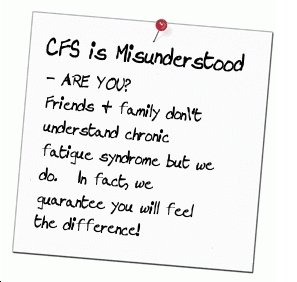DSM-5 Criteria of Bipolar Disorder
The Diagnostic and Statistical Manual of Mental Disorders (DSM) is the guide that therapists and doctors use to diagnose a person with a mental disorder.
For each type of disorder, there is a set criterion that can help them understand what a person has so they know the best option for treatment.
There have been several editions of the DSM, and the most current one is the 5th one. It is referred to as the DSM-5 for short.
The DSM-5 criteria for bipolar disorder vary because there is more than one type of bipolar.
The most well-known types of bipolar are Bipolar I and Bipolar II, but the diagnostic manual also includes several other categories of bipolar.
Types of Bipolar Disorder listed in the DSM-5 are:
● Bipolar I disorder
● Bipolar II disorder
● Cyclothymic disorder
● Substance/Medication-Induced Bipolar and Related Disorder
● Bipolar and Related Disorder Due to Another Medical Condition
● Other Specified Bipolar and Related Disorder
● Unspecified Bipolar and Related Disorder
Each type of bipolar disorder has a complete set of criteria, diagnostic features, associated features, prevalence, development, risk factors, and more.
Because the DSM-5 manual is extremely detailed and involved, we will not share everything explained in the manual.
Some of the language in the DSM-5 is difficult to understand, especially for someone who does not have a formal education in the field of psychology.
Instead, we will give a brief overview of each type of bipolar disorder to explain what bipolar disorder signs and symptoms are respectively.
Signs and Symptoms of Bipolar I Disorder
In order to be diagnosed with Bipolar I disorder, the person must experience:
Manic Episodes
A manic episode is a time when a person may have an abnormally elevated period for at least one week. During that manic episode, the person must experience at least three of the following symptoms:
● Grandiosity (which is an inflated sense of self that could dip into delusion)
● Insomnia or a decreased need for sleep
● Unusually talkative
● Racing thoughts
● Easily distracted by things that are unimportant or irrelevant
● Increase in goal-related activity or can become purposeless
● Excessive involvement in risky behavior
The symptoms of mania can be remembered by the acronym “DIG FAST” which are:
● Distractability
● Indiscretions
● Grandiosity
● Flight of ideas
● Activity increase
● Sleep deficits
● Talkativeness
The manic episode can’t be attributed to substances or medication. In addition, it has to be disruptive enough to a person’s life to cause impairment and often leads to hospitalization.
To be correctly diagnosed with bipolar I disorder, a person must experience at least one manic episode in their life.
At least one manic episode is the primary reason therapists or doctors diagnose someone with bipolar I disorder.
Major Depressive Episode
A major depressive episode which we’ll explore more fully in the section about bipolar II disorder is often a symptom of bipolar I disorder, but it’s not required for a diagnosis.
Hypomanic Episode
A hypomanic episode is similar to a manic episode in many ways, but it is not as severe as mania.
This is another common symptom of bipolar I disorder but is also not a requirement for a bipolar I diagnosis.
Signs and Symptoms of Bipolar II Disorder
A diagnosis of bipolar II disorder requires two specific markers: a major depressive episode and a hypomanic episode.
Hypomanic Episode
Hypomanic episodes are very similar to manic episodes, except for the fact that it does not impair social or occupational functioning and do not require hospitalization.
Major Depressive Episode
A major depressive episode has a set of symptoms, and a person must experience at least five of these symptoms. The symptoms should not be the norm, and they must last for at least two weeks.
The symptoms of a major depressive episode are:
● Feeling depressed for most of the day
● Lack of interest in things the person was previously interested in
● Significant change in weight or loss of appetite
● Insomnia or hypersomnia
● Either increase or decrease in the brain movement process. This is also called “psychomotor agitation” or “psychomotor retardation.” In other words, someone who is experiencing a major depressive episode may become sluggish or weak (psychomotor retardation) or they may become fidgety or make repetitive movements (psychomotor agitation).
● Fatigue or loss of energy
● Feelings of worthlessness or inappropriate guilt
● Loss in cognitive functioning
● Recurrent thoughts of death, suicide, or suicidal ideation
An acronym used for a major depressive episode is SIG-E-CAPS which stands for:
● Sleep changes
● Interest loss
● Guilt
● Energy lack
● Concentration
● Appetite
● Psychomotor
● Suicidal thoughts
A major depressive episode is marked by impairment in social or occupational areas, and can’t be attributed to substances or medicine.
Another difference between bipolar I disorder and bipolar II disorder is a person with bipolar II disorder will not experience a manic episode, whereas someone with bipolar I may have a major depressive episode.
Learn more about your health online when you read the rest of our information here about: BiPolar Disorder guide and also download the free health report available there!
Warren Tattersall has been a full time nutritional consultant for over a decade and works with people all over the world to help them improve their health, increase their personal energy levels and to use supplements to assist with diet related health issues.
Just send him a note on the form here - Contact Us - to request a personal no obligation one-on-one consultation with Warren
New order website for Australian customers:
For all the subscribers that don't want to talk to anyone, just want to buy their products direct, I'm creating these websites that process orders for you once you register with them.
The Australia GoHerbalifeSite is the first one completed, other countries will come along soon...
Australian customers: Click this link or tap on the banner below to check it out and get registered to place your orders... and remember your 15% discount code: HLIntro15

Did you find this post fun, informative and useful? If so, please share it with others!
If you have a comment, question or suggestion, please leave a comment below!
the A to Z directory of dealing with Health Problems & Self Care Strategies for natural remedies to your health issues.

Subscribe to get your weekly "Health Success Magazine" with a new complete & comprehensive Health Report in every edition!

to “Your Health Success”
our weekly F’R’E’E’ Newsletter
If you would like a free no-obligation private consultation or to contact Warren Tattersall for more information, please click here >> Contact Us

Click the books above to learn more about how we treat CFS naturally, to get your life back!
You will find many assorted Health Reports available for download free to you on this website!
Our free Health Success Reports are each available for you to download when you subscribe to receive them and their 7 part eCourse.
You can unsubscribe at any time, but we are sure you will want to receive all the email lessons of these informative ecourses.
Read more HERE to select the REPORT subjects of most interest (or concern) to you.









